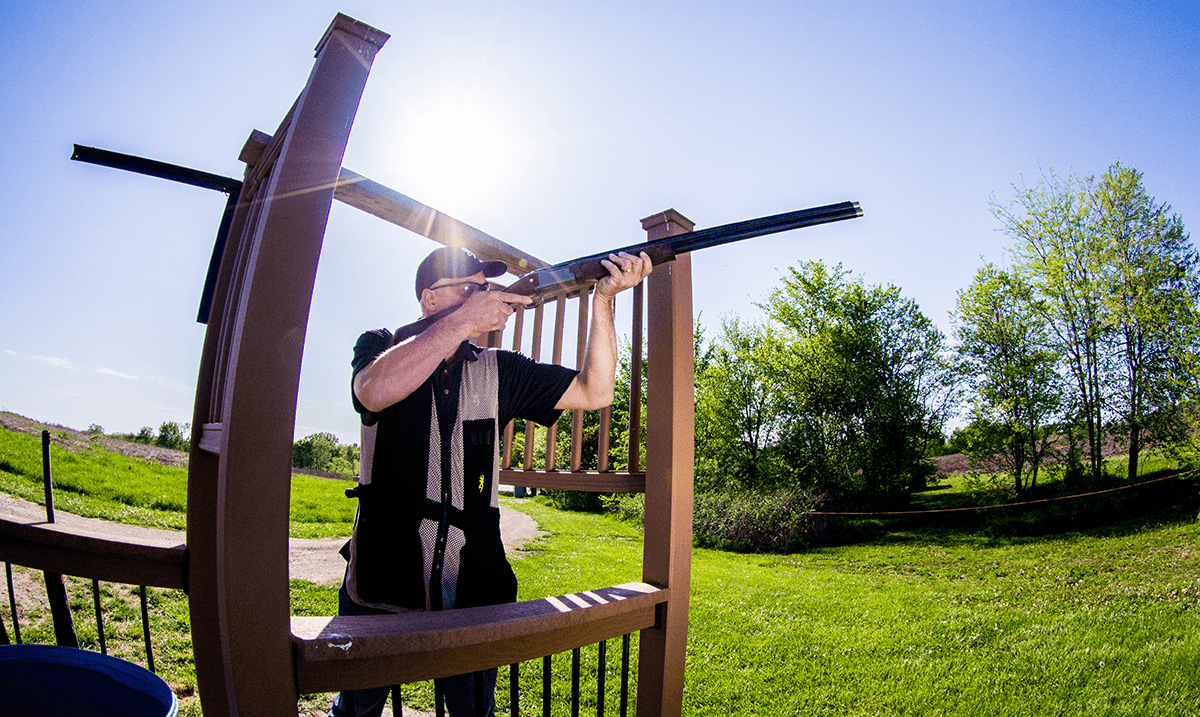
Hunting and competing with shotguns can be a lot of fun, but it’s also a real challenge. For instance, in the three primary shotgun sports — trap, skeet and sporting clays — you’re firing at a small orange clay disk being hurled through the air. Many new shotgun shooters find that breaking clay targets is very tough. And it can be! But learning to hit a moving target, whether that’s a dove during hunting season or a clay bird at the shotgun range, boils down to one primary factor: lead. This is pronounced “leed” as in you can lead a horse to water, rather than “led,” which is how you’d pronounce the metal lead.
What is Shotgun Lead?
Okay, so let’s talk about lead and why you need it when shooting a shotgun. Because shotguns are primarily used to shoot targets that are airborne and moving, to hit such a target while it’s flying you have to have the muzzle of your shotgun gun in front of the target when you pull the trigger. Why? Because the load of shot pellets need time to travel the distance from the end of your barrel to wherever the target is — and that target is moving. Now, if all you’ve ever shot is a handgun or rifle, what you may not know is that you will also be moving the barrel of your shotgun at the same time and you have to keep moving it as you pull the trigger. In other words, there’s no aiming at a moving target. Many instructors refer to this as “shooting to where your target’s going to be.”
Now, if you’ve spent any time watching a clay shooting sport, you know that clays are thrown at all sorts of distances and angles. And your lead will be different for each “presentation.” But how do you figure out all those different leads? Practice and experience — connecting with lots of different targets at all those different angles and distances — of course, but when you’re learning, you’re going to pick one of three types of leads and then learn to perfect it. Let’s take a look.
Sustained or Maintained Lead
Sustained lead requires you to keep your muzzle pointed at a set — maintained — distance in front of the target. This works best when shooting at a known distance, such as from the stations on the skeet range (link to skeet article). Take the targets thrown at any of the eight stations in this game. At each of those positions, the targets you see will always look the same, each and every time. Therefore, the lead needed to break those targets is actually kind of easy to figure out. Let’s say you’re on Station 3 on the skeet field and working with an instructor. Instructors commonly suggest the lead you need when you’re learning how to shoot moving targets, so yours might say you need “two feet of lead.” What that means is that you should see what you estimate is two feet of space between the clay flying through the air and the bead at the end of your shotgun barrel — remember, you’re moving the barrel of your shotgun, swinging it, to keep pace with the bird and, with this lead style, you’ll be “maintaining” that two feet of space between the bird and your shotgun’s muzzle bead as you continue to swing and eventually pull the trigger. No, I can’t tell you when it’s “right” to pull the trigger. That’s something years of being a person with hand-eye coordination tells you to do.
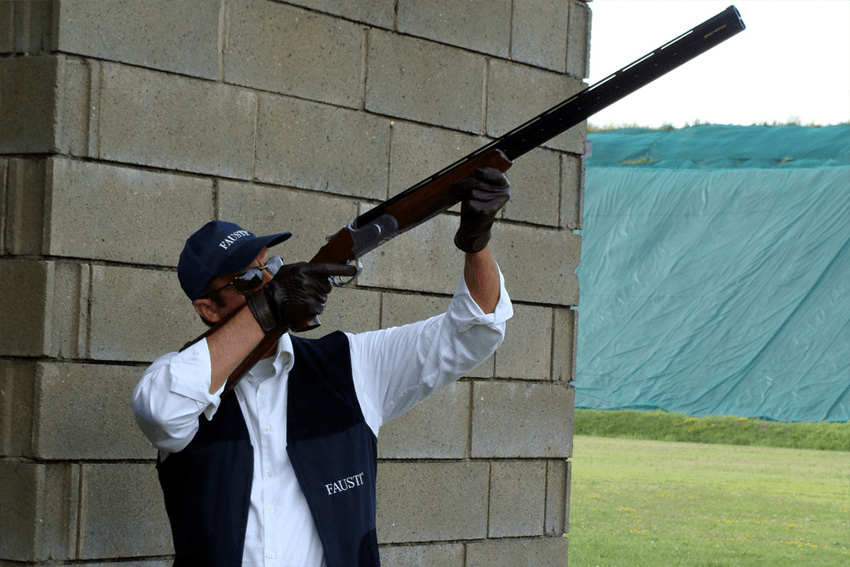
The skeet field is a great place for sustained lead because the targets are consistent. This allows you to practice shooting a repeating target, and once you know how far to get ahead of the clay you can break targets consistently.
I need to emphasize again that continuous shotgun movement is always critical. You must keep the gun moving with the target, maintain your lead as the target flies and then pull the trigger while you’re continuing to move the gun. This is follow-through and it’s necessary to hitting a moving target. If you stop the gun to “aim” it at that two-foot lead we’re using as an example, you will miss.
Because sustained lead works best with target presentations where you rather “know” the leads, it is best to use this style of lead with target sports that have few variables, such as skeet or trap.
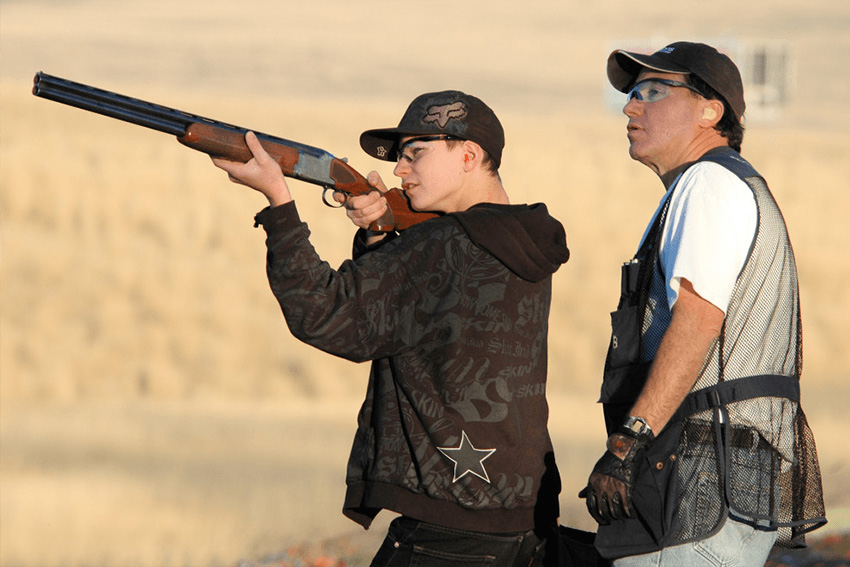
Having an instructor by your side helps, and they can help you decide which method is best for you. If targets are consistent, sustained lead is a good way to start because it provides a concrete figure regarding lead.
What is Pull-Through Lead?
Many new shooters have a hard time with pull-through, and it takes practice but it is a more versatile method of establishing the correct lead than one will find with a sustained lead. Here’s how it works.
With pull-through, you’ll call for the target, start your barrel swing with the muzzle of your shotgun behind the target and in line with it. Now you’ll speed up your swing, eventually passing through the target, pulling the trigger as you cross the muzzle though the target and, as with sustained, continuing to swing your barrel.
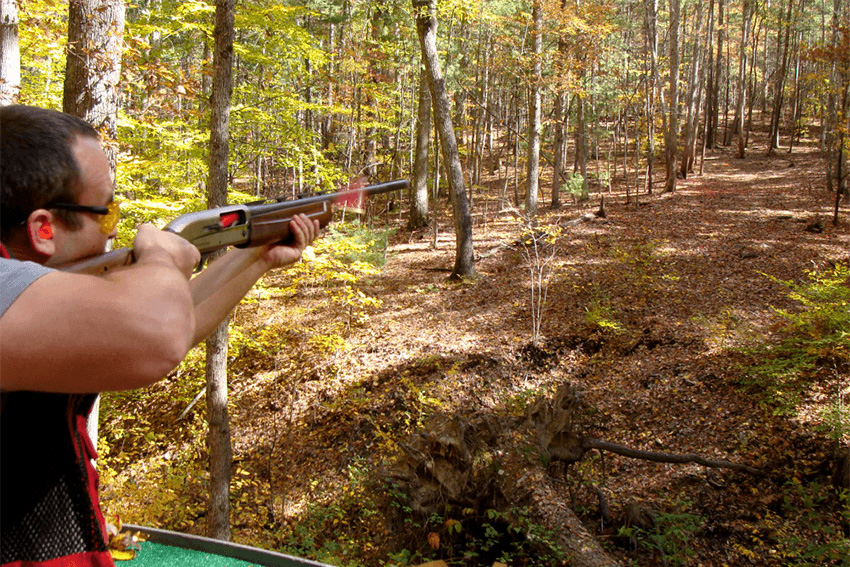
This shooter is breaking a crossing target on the sporting clays course using pull-through. He keeps the muzzle moving, catches the target and presses the trigger as he passes the clay bird. The first bird is breaking in this photo, and he’ll have to get on the second one quickly, so pull-ahead might be better for that second bird, since it requires less muzzle movement.
Pull-through works well with a variety of target presentations at varying speeds and distances. The thought is that the faster the target is going the faster you’ll have to move the gun to catch it, and the faster the gun is moving the more you’ll be ahead of the target when you press the trigger, so lead is kind of “built in.” This method takes some practice, but it’s a great way to shoot when you are faced with multiple shot presentations.
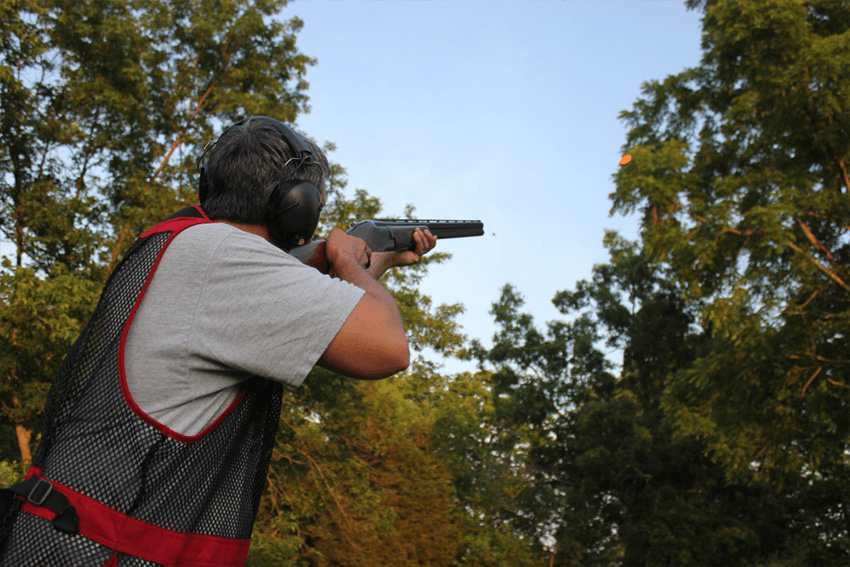
This clay target is moving at an angle, so it will be tough to use sustained lead. Instead, the author uses pull-through, catching the objects downward path with the muzzle and swinging as the gun passes the clay.
What is Pull-Ahead Lead?
Pull-ahead is actually a variation of pull-through, but instead of starting your swing with the barrel inserted behind the clay bird, you will bring the muzzle of the gun up to touch or just below a flying target and then continue following the line of target travel but accelerating past the target while firing.
This can be an easier lead type to learn than pull-through because you don’t have to “catch” the target from behind. The key to both, though, is that the muzzle of your shotgun must be moving faster than the target, otherwise your shot will be behind. Like pull-through, this method works for a variety of different shots at just about any distance, angle and speed. In fact, many experienced shooters prefer this both for very long clay bird shots, as well as finding it particularly good for shooting in tight cover (such as when you’re firing at a high-flying sporting clays target between tree limbs). As with any of the other methods, follow-through is critical.





